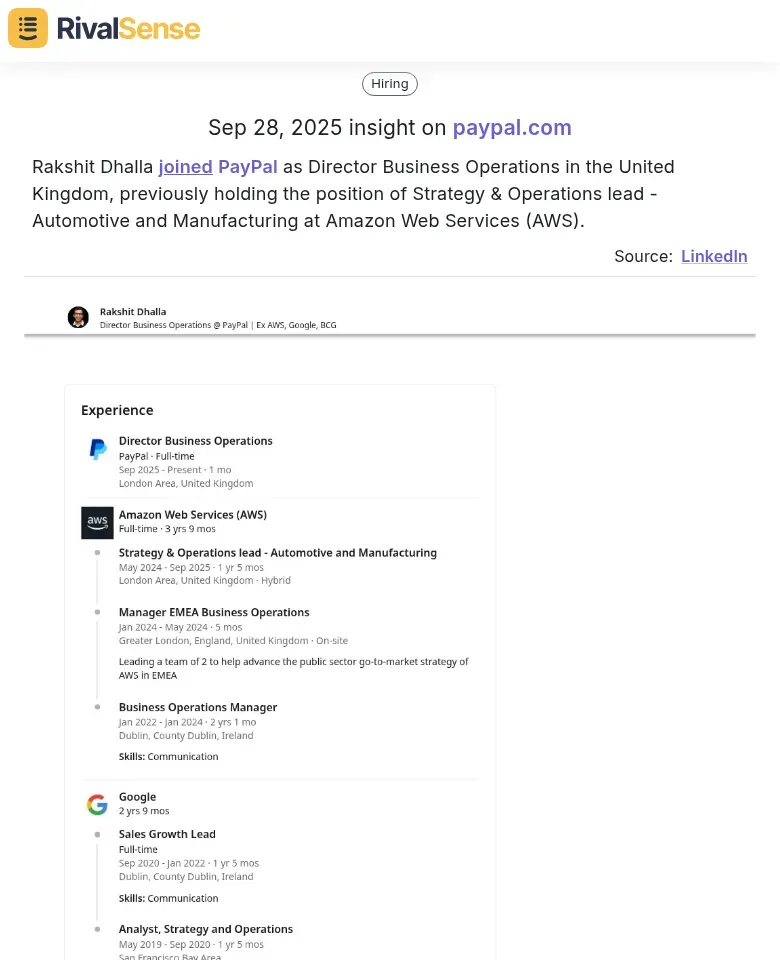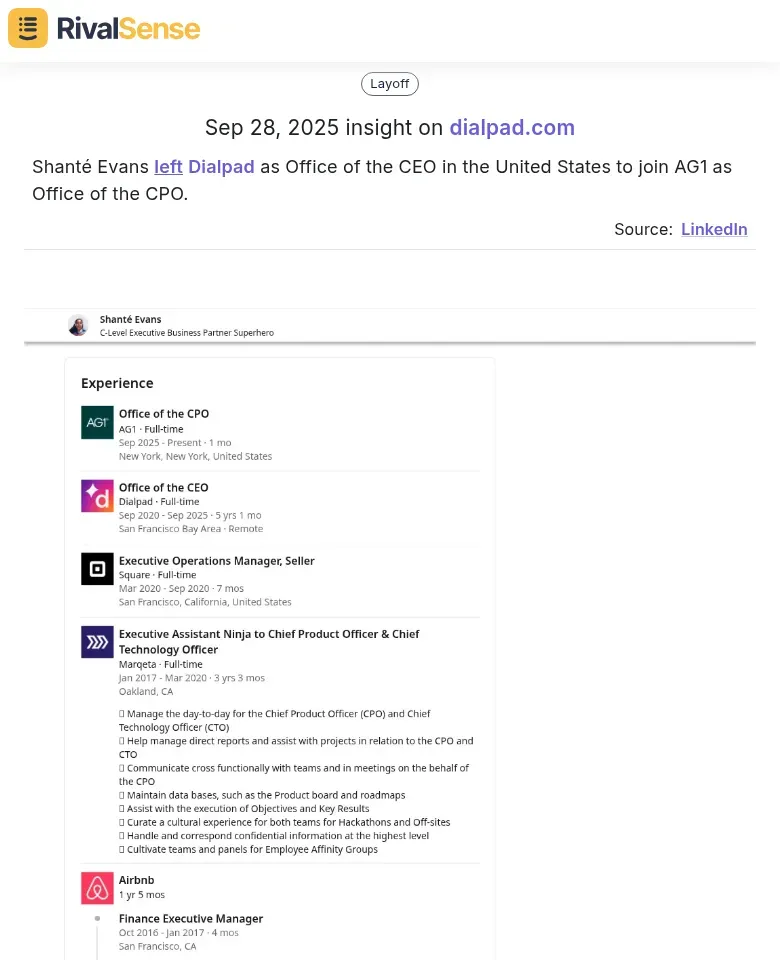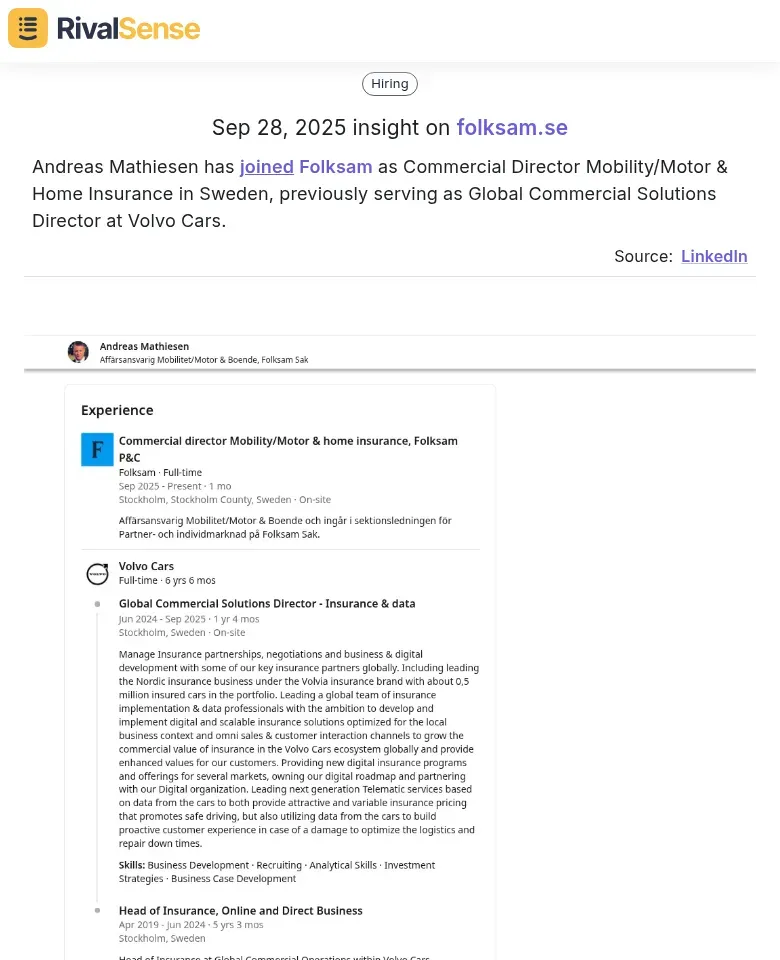Key Account History Tracking Framework for B2B Market Research
Key account history tracking involves systematically monitoring and analyzing the complete relationship timeline with your most valuable B2B clients. This approach goes beyond basic CRM data to capture a holistic view of client interactions, deal history, and competitive engagements. For B2B market research, this historical intelligence is crucial—it reveals why accounts stay or leave, identifies expansion opportunities, and provides insights into competitor tactics that influenced client decisions.
Historical data transforms strategic decision-making by identifying patterns in client behavior, pricing sensitivity, and service preferences. By tracking how clients interacted with competitors before choosing you, you can develop proactive defense strategies and targeted counter-moves. This framework directly boosts customer retention by helping you anticipate needs and address issues early, while driving growth through data-informed cross-sell and upsell opportunities.
Practical steps to get started:
- ✅ Audit existing CRM and communication logs for historical data gaps
- ✅ Create a standardized timeline template capturing key events (deals, issues, feedback)
- ✅ Set up automated tracking for product usage and support interactions
- ✅ Conduct quarterly reviews to identify trends and risks
Core Components of the Tracking Framework
Building a comprehensive key account history tracking framework starts with identifying the core data elements that drive actionable insights. Essential data points include past interactions (meetings, emails, support tickets), purchase history (products/services bought, contract values, renewal dates), and structured feedback (surveys, NPS scores, feature requests). Collecting these components ensures a detailed picture of account health and potential growth areas.
For effective data aggregation, leverage integrated tools like RivalSense for competitor insights, CRM platforms such as Salesforce or HubSpot for interaction tracking, and data management systems like Airtable or Notion for centralized storage. For example, RivalSense tracked that Rakshit Dhalla joined PayPal as Director Business Operations in the United Kingdom, previously holding a key role at AWS. Monitoring such executive moves is valuable because it can signal strategic shifts in competitors, such as entry into new markets or focus areas, allowing you to adjust your business strategy proactively.

Actionable steps for implementation:
- Audit data sources and map key fields to avoid duplicates
- Automate data collection with workflows (e.g., using Zapier)
- Set up dashboards for real-time monitoring and trend analysis
- Regularly cleanse data to maintain accuracy and reliability
Implementing the Framework in B2B Strategy
Successfully implementing the key account history tracking framework requires a structured approach tailored to your specific business objectives. Start by defining clear goals and customizing tracking parameters—such as deal size, industry vertical, and engagement frequency—to align with your B2B strategy. This ensures that the data collected is relevant and actionable for decision-making.
Use a centralized CRM or specialized tools like RivalSense to log interactions and updates, ensuring data accuracy through regular audits and validation checks. Align sales, marketing, and customer success teams by establishing shared KPIs (e.g., win/loss rates, customer lifetime value) and holding cross-departmental reviews to spot trends and gaps. For compliance, anonymize sensitive data, adhere to GDPR/CCPA regulations, and secure consent for tracking activities.
Best practices checklist:
- 🔒 Verify data sources and update records weekly
- 🎯 Train staff on privacy protocols and data entry standards
- 📈 Leverage insights to refine strategies, like adjusting campaigns based on competitor moves
- 🤝 Foster cross-functional collaboration with regular strategy sessions
Analyzing Historical Data for Insights
Analyzing historical account data uncovers valuable patterns that can forecast upcoming market trends and competitor behaviors. By systematically examining metrics over time—such as deal sizes, sales cycles, product adoption rates, and churn reasons—you can identify opportunities and threats early. This proactive analysis enables you to anticipate client needs and competitor actions, securing a competitive edge.
For instance, RivalSense identified that Shanté Evans left Dialpad as Office of the CEO in the United States to join AG1 as Office of the CPO. Tracking such personnel changes is crucial because it can indicate shifts in company strategy or new product focuses, helping you anticipate market movements and refine your own tactics. By correlating historical data with external events, you can predict behaviors like optimal upsell timing or potential churn risks.

Steps for effective analysis:
- Collect 2+ years of account data to establish baselines
- Identify trends (e.g., seasonal dips, industry shifts)
- Correlate with market events and competitor activities
- Focus on anomalies—sudden changes often signal opportunities
- Use case studies to validate insights, like adjusting pricing based on win/loss history
Monitoring and Optimizing the Framework
Ongoing monitoring is essential to keep your key account tracking framework effective and responsive to changes. Establish automated systems to alert you to significant developments, such as new hires, funding rounds, or product launches, using tools like RivalSense for real-time competitor insights. This continuous approach ensures you never miss critical shifts that could impact your strategy.
For example, RivalSense reported that Andreas Mathiesen has joined Folksam as Commercial Director Mobility/Motor & Home Insurance in Sweden, previously from Volvo Cars. Insights into competitor hires like this are valuable because they can reveal expansion into new markets or industries, enabling you to proactively adjust your offerings or marketing efforts. Schedule weekly reviews to update your framework with fresh data and measure effectiveness using metrics like win rate, deal velocity, and customer retention.

Optimization checklist:
- 📊 Set up automated alerts for key account and competitor changes
- 📅 Hold weekly reviews to integrate real-time data
- 📈 Track metrics: win rate, retention, ROI from monitored accounts
- 🔄 Gather quarterly feedback from teams to identify gaps
- 🎯 Adapt framework based on emerging trends (e.g., new regulations)
Conclusion and Future Outlook
Implementing a Key Account History Tracking Framework delivers significant advantages for B2B businesses, including enhanced competitive intelligence, proactive strategy adjustments, and improved customer retention. As we look to the future, emerging technologies like AI and automation are set to revolutionize how we track and analyze account data, with predictive analytics for churn risks and automated sentiment analysis becoming standard practices.
Key takeaways include the importance of structured data collection, regular analysis cycles, and cross-functional collaboration. To adopt and scale this framework, B2B leaders should start with a pilot on 3-5 key accounts, invest in integrated tools that sync CRM and market data, train teams on interpreting historical patterns, and schedule quarterly reviews to update tracking parameters. By embedding this approach, businesses can future-proof their market research and stay agile in dynamic landscapes.
Final tip: Use a simple checklist—track account milestones, log competitor engagements, and document internal strategy shifts—to maintain consistency and drive continuous improvement.
Ready to enhance your competitor tracking? Try out RivalSense for free to get your first competitor report today and gain actionable insights into product launches, pricing updates, and executive moves that impact your strategy!
📚 Read more
👉 How Spotify's Serato Deal Reveals Competitor Expansion Strategies
👉 Leveraging Competitor Website Changes for Proactive Key Account Management
👉 Airline Competitor Thought Leadership Analysis Cheat Sheet
👉 4 Quick Hacks to Analyze Competitor Products for Key Account Growth
👉 Competitor Analysis in Action: Insights from OpenAI's Recent Activities
